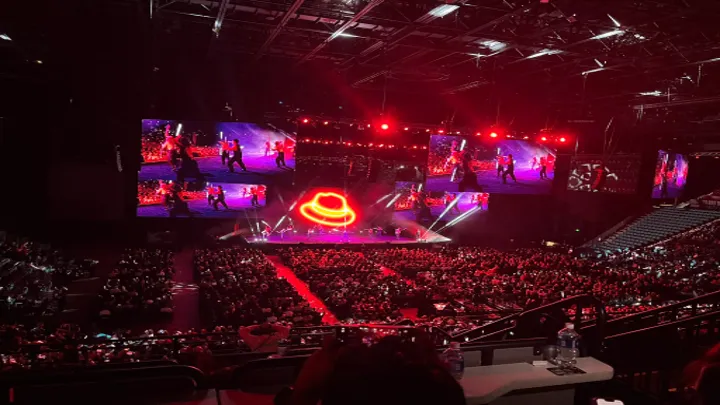Standing on the shoulders of giants
It was an honor to be at Red Hat One in Las Vegas, an event that truly reflects the way IT should be, in our view. This is what we at Tech Tribes have believed in for the past 10 years, and we are committed to continuing this journey for the next 10. Back then, it was Kubernetes. Today, it’s AI. And tomorrow? If anything, it will still be open source.
Meeting the Red Hat community in real life was a pleasure. The people make the difference. The purpose is clear, and the ambitions are massive.

Technology Decision Points (TDPs): Meeting customers where they are
One of the standout moments at Red Hat One was the introduction of Technology Decision Points (TDPs), a structured way to guide customers through foundational decisions that will impact their IT landscape for years. Red Hat has recognized that failing to define these points leads to scattered and inconsistent messaging. At Tech Tribes, we couldn’t agree more. This structured approach to customer decision-making aligns perfectly with our own Tech Tribes Accelerators, our way of ensuring customers get the best possible path forward.
Key TDPs and Why They Matter
-
Modernizing Mission-Critical Applications
- Many customers are struggling with the skyrocketing costs of Broadcom/Spring. There’s a growing need to migrate away from these dependencies and move towards open, efficient, and cost-effective solutions.
-
Accelerating Application Development
- Development cycles need to be faster. Customers face challenges in scaling and maintaining flexibility while keeping security and infrastructure concerns in check.
-
Adopting and Scaling AI
- AI is a game-changer, but many companies struggle to move from proof-of-concept to full-scale deployment.
- The abundance of models makes choosing the right one difficult, and training them is expensive.
- Security and data governance concerns prevent many businesses from leveraging AI effectively.
- The solution? Open-source small language models like DeepSeek, which offer high performance at a fraction of the cost, and allow for customization with enterprise data.
-
Improving Developer Productivity
- Developers are bogged down by security issues and infrastructure maintenance instead of focusing on building applications.
- OpenShift’s Developer Hub, based on Backstage, provides a streamlined development experience with ready-made templates and automation.
-
Standardizing and Automating Infrastructure
- Customers need consistent, portable, and scalable infrastructure that reduces complexity and maintenance costs.
- VMware costs are rising, and many customers want to reduce dependence on it.
- Managing IT environments has never been more complex, requiring solutions that automate resilience, maximize existing investments, and integrate AI tools.
DeepSeek: A Blueprint for Smarter AI
DeepSeek was a recurring topic at Red Hat One, and for good reason. It exemplifies what’s possible when you combine open-source innovation, cost efficiency, and enterprise performance. Just like Kubernetes revolutionized containerization, DeepSeek proves that small, well-trained models can outperform their massive counterparts at a fraction of the cost. This is the future of AI, smart, efficient, and built on open principles.
At Tech Tribes, we see this as a defining shift. Enterprises no longer have to rely on massive, costly models to scale AI. Instead, with projects like DeepSeek, InstructLab, and OpenShift AI, they can customize and deploy AI solutions tailored to their needs without requiring an army of data scientists.
Why This Matters for the Future
Red Hat’s approach is simple: work with partners, embrace the speed of innovation, and build for the future. Stefanie Chiras, responsible for Red Hat’s partner ecosystem, put it perfectly, Red Hat succeeds when partners succeed. She understands how to drive community-driven innovation and create a landscape where everyone benefits.
IBM plays a role in this story, with Red Hat right at the center. The open-source philosophy remains at the heart of everything, from automation to AI, hybrid cloud to infrastructure modernization. The future is about collaboration, repeatability, and adaptability, and Red Hat, together with its partners, is shaping this transformation.
We’re at the beginning of a major shift, just as we were when Kubernetes took off. Now, it’s AI’s turn, and Red Hat is positioning itself as the enabler of open, scalable, and cost-effective AI solutions. If there’s one takeaway from Red Hat One, it’s this:
We are standing on the shoulders of giants, and there’s never been a better time to embrace the open-source future.
At Tech Tribes, we’re all in. The next 10 years will be even bigger.